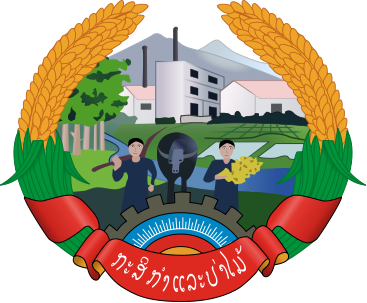Laos PDR National Adaptation Programme of Action (NAPA)
Project Overview
National Adaptation Programmes of Action (NAPAs) provide a process for Least Developed Countries (LDCs) to identify priority activities that respond to their immediate needs to adapt to climate change, ultimately leading to the implementation of projects aimed at reducing the economic and social costs of climate change.
Key Vulnerabilities as identified in Laos PDR National Adaptation Programme of Action (NAPA):
- Agriculture/Food Security
- Forestry Management
Project Details
Climate change is a new concept in the Lao PDR. The understanding of this subject–the science, mitigation aspects, impacts and adaptations, and its relevance to Lao PDR’s economy – are mainly restricted to a few institutions and individuals. The Lao National GHG Inventory Project is the first exposure of policy makers and technical persons to the climate change issues. Though this project has built limited capacity, a much wider dissemination of this issue and capacity building would be required before the country is in a position to have a stated or fully considered national perspective on policies and measures to respond to climate change.
However, climate change activities in the Lao PDR have been growing since its participation at the Rio Earth Summit in 1992. Since then, interactions with IPCC and participation at COP (conference of the parties), including the above-mentioned project, have encouraged limited national consultations and activities relevant to the UN FCCC. These consultations and activities, while not constituting stated government policy, give indications of national thought on issues relating to climate change. Lao PDR is signatory to the FCCC, and ratified the Convention on 5 January 1995.
Adaptation Needs and Priorities:
Lao PDR faces significant threats from climate change, in part because 75 per cent of its population depends on natural resources for their livelihood. The government has expressed concern regarding the impacts of climate change on flooding and rainfall patterns, which are said to be increasing and becoming erratic. Floods and droughts historically have significantly impacted Lao PDR’s agriculture, forestry, water resources, health and economic growth. As such, these sectors have also been identified as priority areas for adaptation (Sengchandala, 2010). Additional concerns are: a lack of capacity and knowledge with respect to climate modeling; a lack of scientific data on climate effects and potential impacts; low levels of public awareness; and a weak institutional setup that acts as a barrier to adaptation. Financial and capacity constraints are highlighted as major barriers to climate change action (DoE, 2000).
Knowledge of climate change issues has progressed over the past decade, but the barriers to implementation still largely remain. Capacity building at all levels of government would greatly support improved awareness and help generate accurate information and data on climate change and appropriate adaptation strategies in the country.
National Level Policies:
Lao PDR submitted its First National Communication to the United Nations Framework Convention on Climate Change (UNFCCC) in November 2000. This document identifies raising awareness as one of the initial areas of focus for the country; the actual term “adaptation” only appears twice in the entire document, and is primarily referenced in relation to the need for a vulnerability and impact assessment of climate change risk. Subsequently, in 2008, Lao PDR established a National Steering Committee on Climate Change and a National Climate Change Office (Sengchandala, 2010). It also prepared a National Adaptation Programme of Action (NAPA) that was submitted to the UNFCCC in May 2009. It is currently developing its Second National Communication with the support of the United Nations Development Programme (UNDP).
In March 2010, Lao PDR approved a National Strategy on Climate Change (NSCC). This framework document identifies seven priority areas for adaptation and mitigation: agriculture and food security; forestry and land use change; water resources; energy and transport; industry; urban development; and public health (Sengchandala, 2010). The NAPA forms a central component of the NSCC. An overarching goal of the NSCC was to ensure that climate change was streamlined into Lao’s Seventh National Socio-Economic Development Plan (2011-2015). The NAPA, NSCC and current Development Plan have greatly strengthened the policy framework for climate change work in Lao PDR and have served to build awareness of the issue at least among senior government officials in the country. Despite this progress, a weak institutional setup is still seen as significant barriers to adaptation. In particular, a lack of coordination between the UNFCCC National Focal Point, the Water Resource and Environment Administration and other line Ministries limits integration of climate change adaptation policies into sector strategies.
Current Adaptation Acion:
Lao PDR is benefitting from a number of adaptation projects, with a smaller number of national projects compared to multi-country projects underway in the country. Its level of activity, though, is low compared to other East and Southeast Asian developing countries. National projects are primarily focused on water, agriculture and disaster risk management, and are funded by the Asian Development Bank (ADB), the Global Environment Facility (GEF), Least Developed Countries Fund (LDCF), Nordic Development Fund and UNDP. Regional projects active in Lao PDR also are primarily focused on addressing adaptation concerns in the water and agriculture sectors, but also address disaster risk management and the provision of climate information services. These regionally focused projects are funded by the governments of Australia, Denmark, Germany, Sweden and the United States.
Assessment:
While climate change is characterized as a high priority in Lao PDR, it appears that capacity is lacking for effective implementation. This observation is reflected in the fact that the country’s highest adaptation priority is simply education and capacity building. Strides have been made in improving this capacity through the development of a NAPA and NSCC, supported by the LDCF.
Ongoing adaptation initiatives within the country are addressing many of the adaptation priorities identified by the country. There is a considerable amount of work occurring with the water and agriculture sectors, at both the regional and national level, as well as within the area of policy formulation and risk reduction. Gaps in Lao PDR’s climate change activities include a dearth of initiatives within the forestry sector, which has been identified as a top adaptation priority for the country. Forestry initiative may exist within the country under the banner of mitigation projects, and it is possible that these projects would entail adaptation co-benefits. Additional gaps in current programming include energy and transport, urban areas, public health and gender. In addition, it appears that the country has a lack of climate change expertise or accurate data. Going forward, Lao PDR could greatly benefit from the sharing and internal development of scientific and technical capacity for climate change generally and adaptation specifically.
Primary Source: Gass, Philip; Hove, Hilary; Parry, Jo-Ellen. (2011) “Review of Current and Planned Adaptation Action: East and Southeast Asia.” Adaptation Partnership / International Institute for Sustainable Development.
Additional References:
- Department of Environment (2000). Lao People Democratic Republic: The First National Communication on Climate Change. Retrieved from http://unfccc.int/resource/docs/natc/laonc1.pdf
- National Environment Committee (2009). National Adaptation Programme of Action to Climate Change. Retrieved fromhttp://unfccc.int/resource/docs/napa/laos01.pdf
- Sengchandala, S. (2010). Climate Change Policy of Lao PDR. Presentation to the 8th Workshop on GHG Inventories in Asia, Lao Plaza, 13-16 July 2010. Retrieved from http://www-gio.nies.go.jp/wgia/wg8/pdf/0-3_syamphone_segchandala.pdf
- United Nations Development Program (UNDP). 2010. Human Development Index 2010. Retrieved from http://hdr.undp.org/en/statistics/
Key Results and Outputs
The government’s main goals for climate change activities in the future are:
- Increase public awareness activities on climate change
- Implement a GHG mitigation plan
- Regularly monitor and control climate change activities, for example data collection on temperature, rainfall, water flow, etc; and
- Cooperate with international agencies on climate change activities and related issues
Climate Related Hazards
- flooding (flash)
- Changes in river morphology/loss of water bodies
- Drought and low flows
- Landslides
Main Human Vulnerabilities and Livelihood Impacts
- Reduced agricultural production
- Water shortage and/or groundwater depletion
- Increased disease and/or other health problems
- Food security
- Income generation
- Loss of forest area or production




